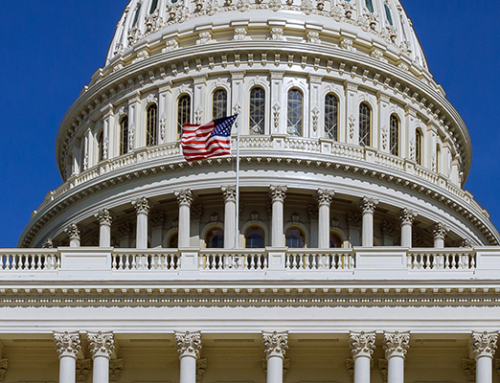At a point in the nation’s economic recovery in which job creation has been lackluster and many employers have been reticent to create jobs because of increased regulation, the unknown impact of the ACA, and other increased costs of doing business, President Obama has once again included in his proposed budget unemployment tax increases to be paid by employers which would represent the largest increase in unemployment tax obligations for employers since the beginning of the program in the 1930s. The proposal, similar to prior years, would start by increasing the FUTA tax by imposing a surtax of 0.2 percent on top of the normal base rate of 0.6 percent on the $7,000 FUTA tax base. This is a 33% increase in FUTA tax for employers doing business in all states. The proposal would then raise the FUTA tax base beginning in 2017 to $15,000, index the wage base to growth in wages, and reduce the net FUTA tax rate to 0.37%. See the revenue document describing the proposals at http://www.treasury.gov/resource-center/tax-policy/Documents/General-Explanations-FY2015.pdf, particularly page 283 for revenue detail.
FUTA Tax Increase – Cost to employers: $15.2 billion over ten years and becoming permanent thereafter
The proposal would reinstate the 0.2-percent surtax and make it permanent. The proposal would be effective for wages paid on or after January 1, 2015.
SUTA Tax Increase – Cost to employers: $58.9 billion over ten years and becoming permanent thereafter
The proposal would provide short-term relief to employers by suspending interest payments on State UI debt and suspending the FUTA credit reduction for employers in borrowing States in 2014 and 2015. The proposal would also raise the FUTA wage base in 2017 to $15,000 per worker paid annually, index the wage base to wage growth for subsequent years, and reduce the net Federal UI tax from 0.8 percent (after the proposed permanent reenactment and extension of the FUTA surtax) to 0.37 percent. States with wage bases below $15,000 would need to conform to the new FUTA base. States would maintain the ability to set their own tax rates, as under current law. The proposal would be effective upon the date of enactment.
Comment: Adoption of the provision would dramatically increase state UI taxes in many states whether or not they have solvent UI trust funds. Approximately 32 States with tax bases below $15,000 would be adversely impacted with the number growing as the required tax base would be indexed to wage growth over time. Many states have already addressed solvency issues with bonds or other financing measures (ID, TX, MI, PA, IL, CO, NV, AZ). Many states have already addressed solvency concerns with increases in tax base and/or rates and remaining states are already planning to eliminate outstanding Title XII debt in the next few years.
Short term relief from interest and FUTA offset credit tax reductions could have been helpful during and immediately after the end of the recession to give states time to formulate solvency measures. UWC favored early short term relief. However, we are well down the road in addressing state UI solvency issues on a state by state basis and combining short term relief with major long term permanent tax increases dramatically throws the state UI system out of balance while imposing additional tax increases that discourage job creation.
Other UI related issues
Increased regulation of employee leasing
The proposal would set forth standards for holding employee leasing companies jointly and severally liable with their clients for Federal employment taxes. The proposal would also provide standards for holding employee leasing companies solely liable for such taxes if they meet specified requirements. The provision would be effective for employment tax returns required to be filed with respect to wages paid after December 31, 2014.
Increased regulation in the classification of workers
The proposal would permit the IRS to require prospective reclassification of workers who they believe are currently misclassified and whose reclassification they believe should have been prohibited under current law. The penalties for misclassification provided under current law would be retained, except that the lower penalties under current law would apply only if the employer voluntarily reclassifies its workers before being contacted by the IRS or another enforcement agency and if the employer had contractors. For employers with only a small number of employees and a small number of misclassified workers, reduced penalties would be waived if the employer (1) had consistently filed Forms 1099 reporting all payments to all misclassified workers and (2) agreed to prospective reclassification of misclassified workers. It is anticipated that, after enactment,
new enforcement activity would focus mainly on obtaining the proper worker classification prospectively, since in many cases the proper classification of workers may not have been clear. (Statutory employee or nonemployee treatment as specified under current law would be retained.)
The Department of the Treasury and the IRS also would be permitted to issue generally applicable guidance on the proper classification of workers under common law standards. This is intended to enable employers to properly classify workers with much less concern about future IRS examinations. Treasury and the IRS would be directed to issue guidance interpreting common law in a neutral manner recognizing that many workers are, in fact, not employees. Further, Treasury and the IRS would develop guidance that would provide safe harbors and/or rebuttable presumptions, both narrowly defined. To make that guidance clearer and more useful for employers, it would generally be industry- or job-specific. Priority for the development of guidance would be given to industries and jobs in which application of the common law test has been particularly problematic, where there has been a history of worker misclassification, or where there have been failures to report compensation paid.
Employers would be required to give notice to independent contractors, when they first begin performing services for the employer, that explains how they will be classified and the consequences thereof, e.g., tax implications, workers’ compensation implications, wage and hour implications. The IRS would be permitted to disclose to the Department of Labor information about employers whose workers are reclassified. Independent contractors receiving payments totaling $600 or more in a calendar year from an employer would be permitted to require the employer to withhold for Federal tax purposes a flat rate percentage of their gross payments, with the flat rate percentage being selected by the contractor.
The proposal would be effective upon enactment, but prospective reclassification of those covered by the current special provision would not be effective until the first calendar year beginning at least one year after date of enactment. The transition period could be up to two years for independent contractors with existing written contracts establishing their status.
Increased access by the IRS to National Directory of New Hire data
The proposal would amend the Social Security Act to expand IRS access to NDNH data for general tax administration purposes, including data matching, verification of taxpayer claims during return processing, preparation of substitute returns for non-compliant taxpayers, and identification of levy sources. Data obtained by the IRS from the NDNH would be protected by existing taxpayer privacy law, including civil and criminal sanctions. The proposal would be effective upon enactment.





